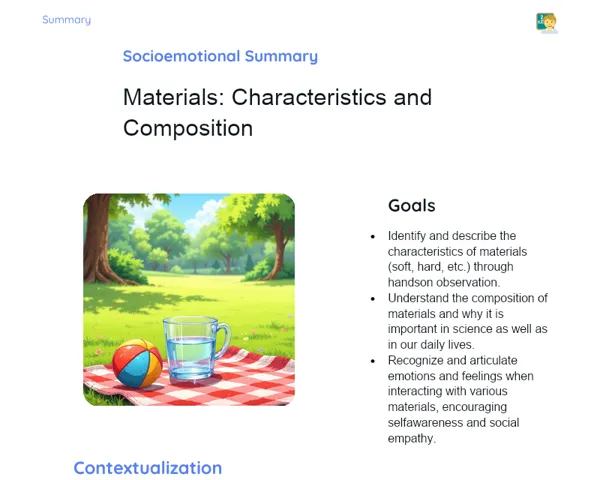Objectives
1. 🔍 Grasp the basic functioning of an electrical circuit by identifying its key components and their roles.
2. 🛠 Cultivate hands-on skills to assemble and test simple circuits using batteries, resistors, and conductive wires.
Contextualization
Have you ever thought about how electrical circuits form the backbone of our everyday gadgets, from mobile phones to home appliances? They function like the intricate road network of a city – without them, electricity wouldn't flow seamlessly, and our essential devices wouldn't operate! Understanding how electrical circuits work is crucial, not just for troubleshooting electrical issues at home but also for paving the way for innovations in technology. So, let’s dive into the fascinating world of electrical circuits together!
Important Topics
Battery
The battery is a crucial element in an electrical circuit, acting as the energy source that propels the electric current through the entire system. It establishes the potential difference necessary for electrons to journey from a high voltage area to a low voltage area, thus completing the circuit.
-
The voltage rating of a battery, measured in volts, indicates the electrical potential available for current flow in the circuit.
-
Batteries can be interconnected in series or parallel, boosting either energy storage or the voltage as needed.
-
Different types of batteries, such as alkaline, lithium-ion, and rechargeable ones, cater to distinct applications in circuits.
Resistor
Resistors are components that resist current flow in a circuit. They play a vital role in regulating the amount of current that passes through a circuit and safeguard delicate components from too much current.
-
Resistance is quantified in ohms, and it varies significantly, allowing for adjustments in current levels within a circuit.
-
When resistors are connected in series, their resistances add up, whereas in parallel, the overall resistance is less than that of any single resistor.
-
Besides controlling current, resistors serve functions such as voltage division, transistor polarization, and dissipating energy as heat.
Conductive Wires
Conductive wires serve as the physical pathway through which electric current flows from one component to another in a circuit. Typically crafted from copper or other highly conductive materials, they feature an insulating layer to avert short circuits and protect individuals from electric shocks.
-
The thickness of the wire is critical, as larger diameters facilitate higher current flow without overheating.
-
Twisted or tightly packed conductive wires can unintentionally behave like inductors, potentially disrupting circuit performance.
-
In circuits that operate at high frequencies, the orientation and length of wires can significantly affect performance due to induction and electromagnetic interference.
Key Terms
-
Electrical Circuit: A complete path that permits electricity to flow, consisting of a power source (like a battery), conductors (wires), and devices that utilise electricity (like bulbs or motors).
-
Electric Current: The movement of electric charge within a circuit, instigated by a voltage difference between points in the circuit. It is measured in amperes (A).
-
Electric Voltage: The electric potential difference between two points that drives current through a circuit. It is measured in volts (V).
For Reflection
-
How could altering the battery voltage impact a circuit's operation? Provide practical examples.
-
Why is it essential to employ resistors to manage current flow in a circuit? How does this influence the longevity of circuit components?
-
Discuss how the diameter and length of conductive wires can shape a circuit's efficiency, particularly in high-frequency scenarios.
Important Conclusions
-
We ventured through the realm of electrical circuits and discovered how batteries, resistors, and conductive wires collaborate to facilitate the electric current that powers our everyday life.
-
We recognised the significance of each component and how they are integral to the functionality of electronic devices and electrical systems in our daily routines.
-
We highlighted how voltage, current, and resistance are foundational principles that uphold any circuit's operation, emphasising the importance of fine-tuning these parameters for optimal performance and safety.
To Exercise Knowledge
To put our learning into action, create a simple circuit at home using a battery, an LED, and a resistor. Experiment with different battery voltages and observe how they influence the LED's brightness. Make a note of your findings and discuss your insights with family and friends.
Challenge
Circuit Detective Challenge: Get your hands on a non-working electronic device and try to troubleshoot the circuit issue. If you have a multimeter, use it to measure voltage and resistance at various circuit points. See if you can fix the issue and bring the device back to life!
Study Tips
-
Watch online tutorial videos that show how to construct simple circuits. This will help you visualise our classroom lessons and deepen your understanding of component interactions.
-
Practice interpreting circuit diagrams. This skill is crucial for anyone looking to pursue a career in electrical engineering and can provide insights into how electronic devices are designed.
-
Participate in online electronics forums or study groups to explore questions and share experiences from circuit projects. Learning from the experiences of peers can greatly enrich your understanding.



